Dialogue “Hiroshima” with Ishiuchi Miyako and Arthur Binard
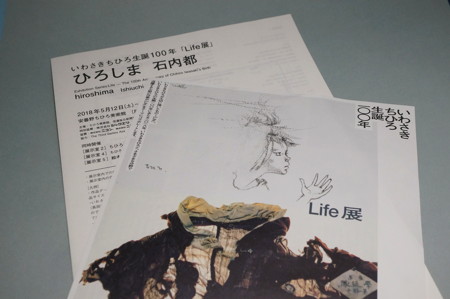
In June, I participated in an event held at the Chihiro Art Museum Azumino. It was a dialogue between Ishiuchi Miyako and Arthur Binard titled “Hiroshima.”
Ishiuchi Miyako has been photographing the belongings of people who were exposed to the atomic bomb in Hiroshima. I had seen a photo exhibition she held elsewhere before.
Arthur Binard, on the other hand, was someone I had never heard of before. He is a poet born in Michigan and currently residing in Hiroshima, and I also learned on that day that he has published a photo book titled “Looking for.”
Since photography and recording were not allowed at the venue, I sketched the scene. Trees outside can be seen through the glass. The event started at 17:30, so it gradually got darker, which was nice.
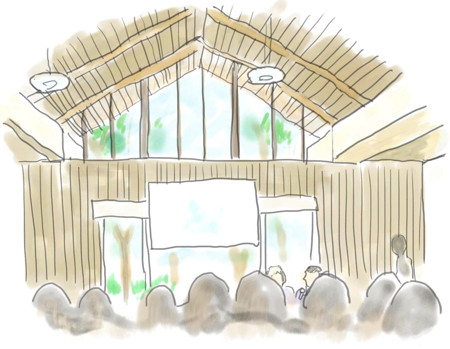
I will record the words that left an impression on me from the two of their conversation.
Since I am writing based on my notes, this may not be an exact reproduction, and the nuances may also differ. Please read this as how I perceived it. (The conversation was in Japanese.)
Below, each person’s remarks will be abbreviated as Ishiuchi Miyako = (M) and Arthur Binard = (A).
About Hiroshima
(M)
“When I first saw the dome in Hiroshima, I thought it was small and cute. Until then, my image of it was based on photographs. They were monochrome, and felt these were Hiroshima from a man’s perspective.”
(A)
“I wasn’t particularly interested in Hiroshima before coming to Japan. I had heard that the atomic bomb was necessary to end the war quickly. I lived in Tokyo at first, and I heard stories about the air raids from my neighbors. After hearing about the Tokyo air raids and learning that the lower-class neighborhoods were being burned, I thought, ‘Are they really trying to end the war? They’re not, are they?’"
(M)
“I also visited museums in the United States, but the sense of reality was different. Japan was post-war, but the United States was still at war.”
(M)
“There’s a difference in perspective between victims and perpetrators, but because of that framework, we can transcend it. New things become visible. That’s why there are stories we can hear.”
About the relics
(M)
“In Hiroshima, daily necessaries that would normally be discarded were preserved because they were exposed to the atomic bomb.”
(A)
“The shoes (in the photo) were brought to the museum in 2010. They were preserved because the boy who wore them managed to return home. In this way, they were kept by his family and became heirlooms. They embody the family’s feelings. Why doesn’t anyone photograph them as ‘beautiful objects’ like you do?”
(M)
“I don’t photograph the past. I photograph only the shoes themselves, regardless of the boy. I want to photograph them beautifully and stylishly. I photograph them because I think they are beautiful.”
(A)
“My father passed away at the age of 40, but when I surpassed that age and felt various things, I thought, ‘Oh, my father passed away without knowing the things I am feeling now.’ The owners of the heirlooms also couldn’t experience that ‘moment of feeling.’”
About the “message” of expression
(M)
“(Since there are no explanations accompanying the exhibition), I want viewers to think for themselves as they look at the photographs, moving closer or further away. I want them to discover things for themselves with their own eyes.”
(A)
“When it comes to stories about Hiroshima, people always ask, ‘What is the message?’
Messages have always clashed with each other. But living in Japan has allowed me to hear voices and stories that are not messages. I am looking for ‘stories’ rather than messages."
(M)
“Even now, every year, new artifacts are brought to the museum. The things I need to photograph keep increasing every year. The artifacts are calling out to me. I intend to continue engaging with Hiroshima for the rest of my life. I intend to take responsibility for it.”
——-
I have summarized a portion of the conversation.
Please forgive me if there are any discrepancies with what was actually said.
I hadn’t considered that relics are still being donated to the museum today. Thinking about it, it makes sense that relics are usually kept by families, and it’s not like they’re donated to museums from the start. Each family keeps the relics at home, passes them down to their descendants over decades, and then, when the opportunity arises, donates them to the museum. I realized that this process is still ongoing today, and that there are still people who are preserving these relics.
Before the discussion, I also visited the exhibition, and without any explanations accompanying the photos, I found myself pondering various things. I tried to read the text on the name tags (which included names, school names, and blood types). I imagined the ages of the people based on the shapes, colors, and patterns of their clothing.
When I stepped outside after the event, it had grown dark. The museum’s lights were beautiful.
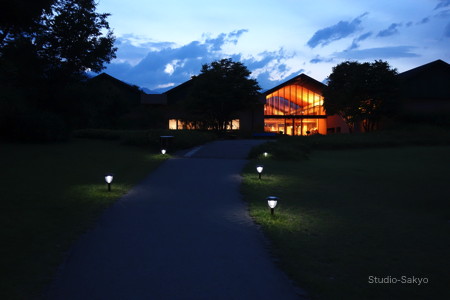
In the photos, the sky appeared brighter than it did to the naked eye, reminiscent of Magritte’s “The Empire of Light.”
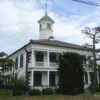
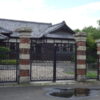
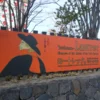
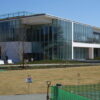
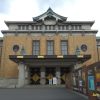
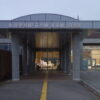

Recent Comments